At just over 30 years old, Cami Ostman embarked on a journey to reclaim her sense of self and peace of mind. Inheriting a 20-acre property in eastern Washington marked the genesis of this voyage, setting into motion her vision for an off-grid existence.
Though married at the time, she increasingly felt confined by societal expectations of her gender role. As she writes, “I felt thrust into a role of caregiver – something I see happen to women often.” Her solution was as radical as it was liberating – leaving not only her marriage but the trappings of modern suburban life.
Yearning for Open Space and Freedom
Cami longed for solitude and independence. Upon inheriting 20 acres of land from her grandparents, she saw an opportunity to build a peaceful retreat for herself. After leaving her marriage, she approached her aunt, the land’s owner, and asked to purchase the property. Her aunt agreed, and the land became hers.

Cami began visiting the land monthly, staying in an old trailer and imagining building a cabin there. However, the trailer was in poor condition and would not last much longer. She researched alternative housing options and settled on a yurt, a circular tent-like structure used by nomadic groups in Asia. h
Inheriting the Perfect Off-Grid Property
Cami’s grandparents had owned 20 acres of land in eastern Washington for years. After visiting the property for the first time in her 30s and falling in love with its natural beauty, she began to imagine building a cabin on the land.
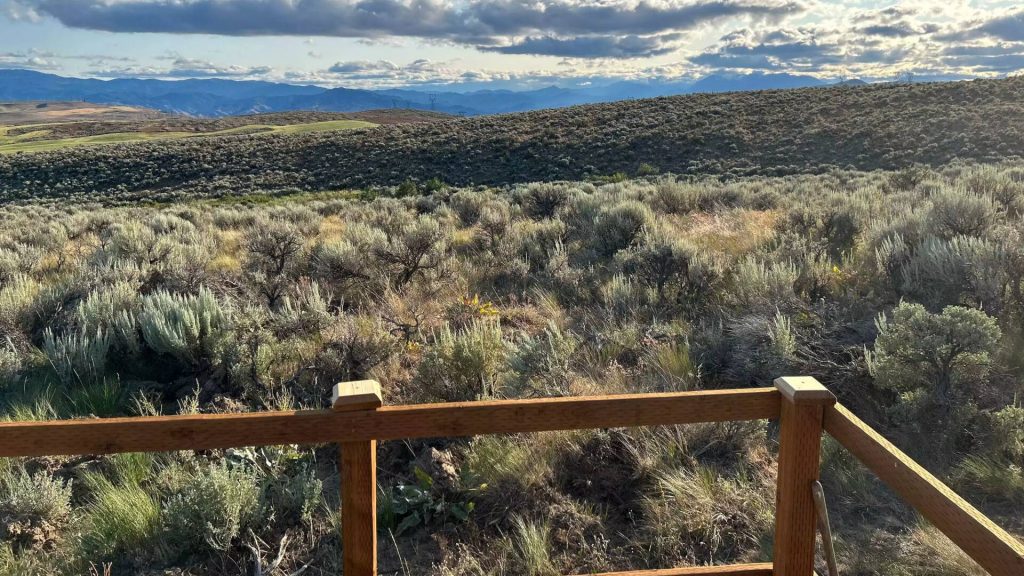
In 2015, Cami left her marriage in order to restart her life. A few years later, after her grandparents passed away, she approached her aunt, who had inherited ownership of the land and asked to purchase it. Her aunt agreed to give her the land for a handshake.
Creating a Temporary Home in the Old Trailer
Upon acquiring the land from her aunt, Cami first utilized an old trailer that had been left on the property for temporary shelter. She gutted the outdated and asbestos-filled trailer to make it habitable while she researched more permanent and sustainable housing options for the land.

She became enamored with the idea of living in a yurt, a circular tent-like dwelling used by nomadic groups in Central Asia. She researched companies that sold yurt materials and kits, deciding on Pacific Yurts. She paid just under $19,000 for the necessary materials, paying it off over time.
Building the Yurt
To construct the yurt, she enlisted the help of her brothers and father. Following the instructions and tutorial videos provided by Pacific Yurts, they first built a 24-foot diameter plywood platform. They installed a drip edge, a board around the perimeter of the platform that holds in the walls, and then built the lattice wall structure and covered it in wool.
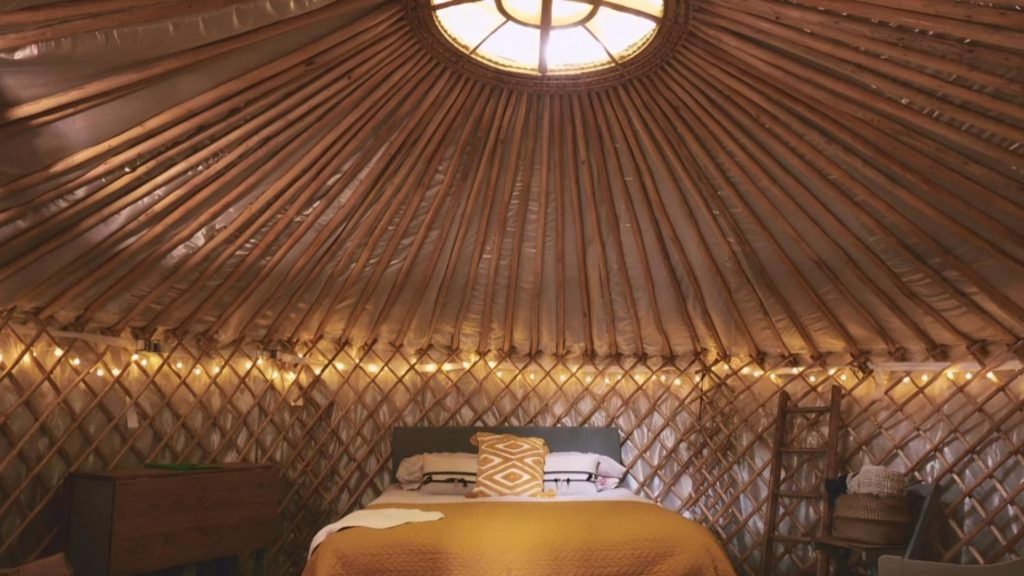
The platform took a weekend to build, and the yurt took another full weekend to construct. Exhausted after completing it, she wept joy at seeing her vision come to fruition. Cami stays in her yurt for two to five nights at a time, returning to her condo in Shoreline, Washington, the rest of the week.
Designing a Cozy Yurt Interior
The interior design of a yurt largely depends on its owner’s tastes and needs. For a free-spirited, bohemian aesthetic, natural and recycled materials work well. Cami chose a hippie-chic style for her yurt, with an eclectic mix of furnishings, art, and decor that create a cozy, colorful space.

To maximize the limited floor space, she selected multi-purpose furniture like sofas and chairs that convert into beds, allowing her to host overnight guests. She also installed a loft bed for herself. Soft lighting from Edison bulbs strung around the ceiling contributes to the cozy ambiance. Artwork, originally painted by her favorite tattoo artist, adds bright splashes of color to the yurt’s canvas walls.
Designing The Outdoors
For seating around the fire pit outside, tree stumps, large stones, and wooden chairs or benches are suitable options. Lanterns or strings of lights provide illumination for enjoying evenings outdoors. Native plants, wildflowers, and sagebrush help the yurt blend into its natural surroundings.
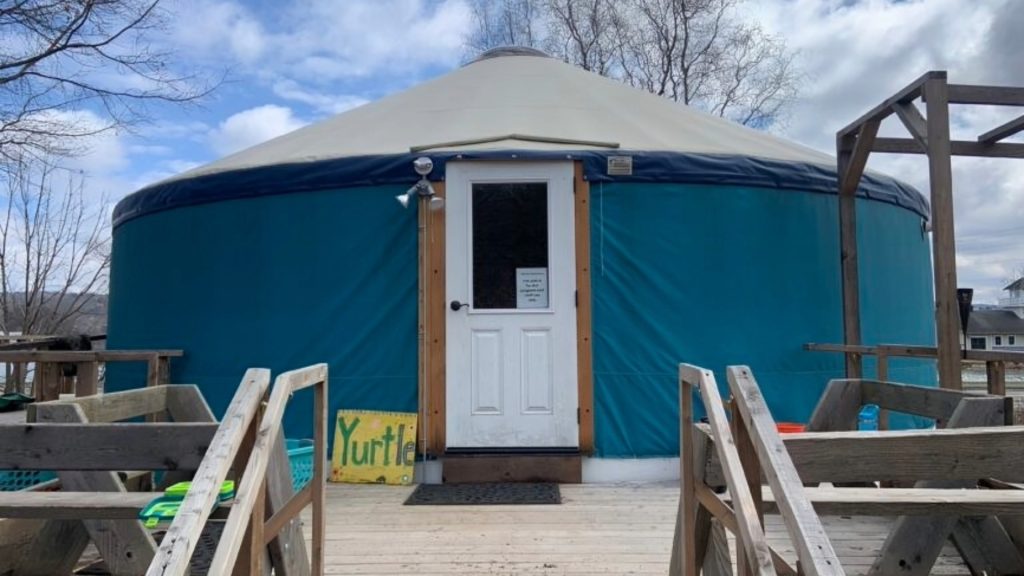
A rustic wooden deck or patio adjoining the entrance gives occupants a place to sit outside while protecting the base of the yurt. Sustainable and low-impact systems for utilities are necessary when living off-grid.
Splitting Time Between the Yurt and City Life
Cami splits her time between living in her yurt in eastern Washington and her condo in Shoreline, a suburb of Seattle. She stays in the yurt for two to five nights before returning to the city for the remainder of the week. The yurt has become like a second home to her, allowing her an escape from the demands of city life.
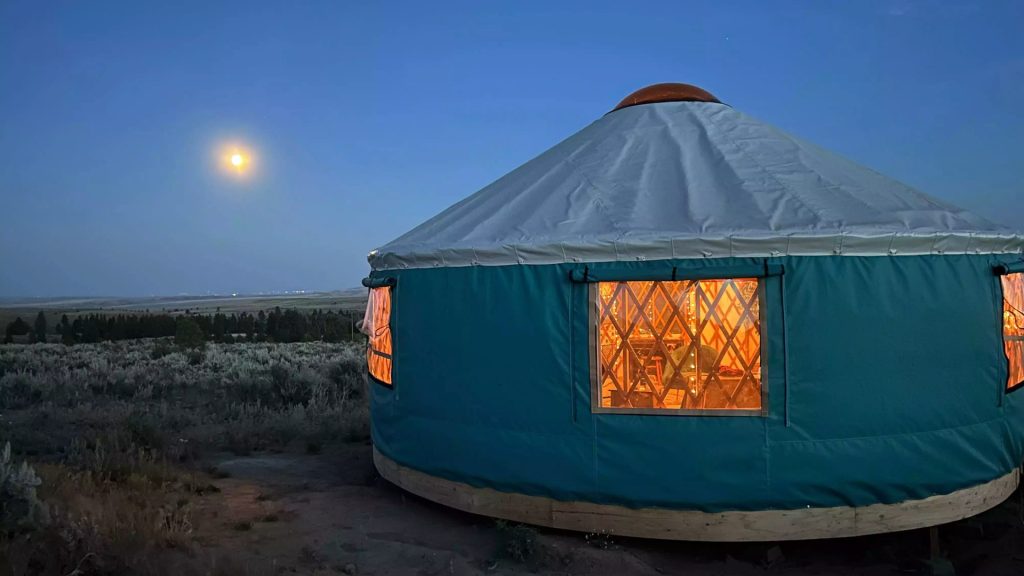
In the yurt, she can leave behind the responsibilities of her businesses in Seattle and find solitude and peace. There are no modern amenities like electricity or plumbing, so she lives, hauling in supplies for short stays and using wipes to stay clean between trips to a gym to shower.
Finding Peace and Fulfillment in Nature
Upon acquiring the land from her aunt, Cami found solace and tranquility in the natural surroundings. She describes the property as “20 acres of sagebrush and unobstructed mountain views.” The seclusion and scenic vistas of the land allowed her to do just that.

While Cami continues operating her businesses in Seattle, she can disconnect from her work responsibilities at the yurt. She says of her experiences on the property, “There’s nothing I miss when I’m in the yurt – it’s so ridiculously peaceful. It’s just me, the deer, and the owls.”
Beginning Your Own Off-Grid Journey
Those interested in living off-grid in a yurt should conduct thorough research to understand what is involved and needed. Key considerations include understanding local building codes and zoning laws related to yurts and off-grid living and researching reliable companies for purchasing a yurt and necessary components.

When ready to purchase a yurt and the necessary components, focus on investing in high-quality essentials. At a minimum, the components needed include the yurt structure, a raised wooden platform, insulation, a wood-burning stove for heating and cooking, beds, linens, a composting toilet, a water tank, and renewable energy sources like solar panels.
Her Safe Place
In the end, her journey has led her to peace and freedom that she was unable to find elsewhere. Though the path was long and full of risks and challenges, her perseverance paid off with the life she always envisioned on her terms.
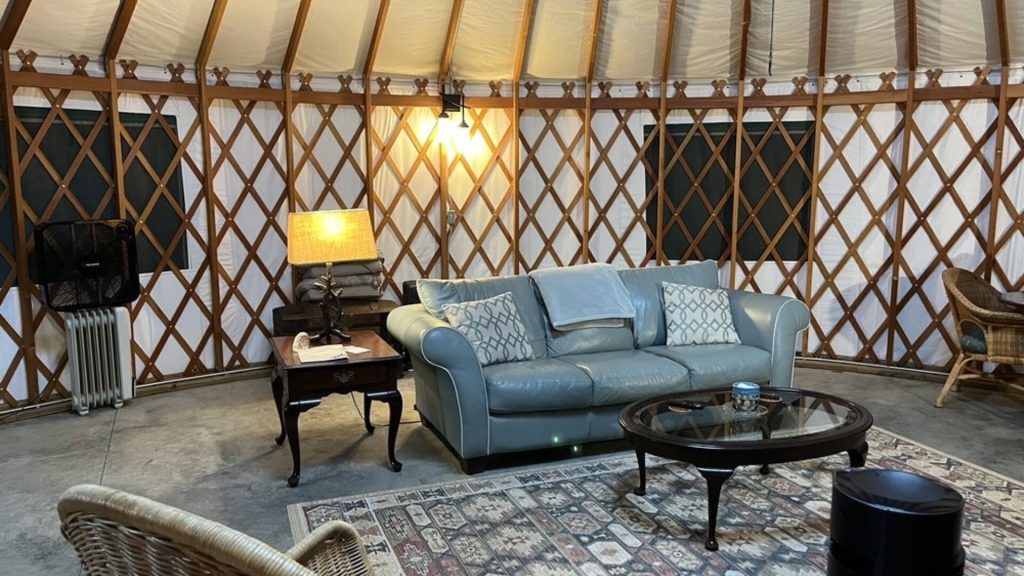
Now she finds tranquility in the yurt that has become a refuge and symbol of the independence she fought for. Her story stands as an inspiration that it is never too late to make a change and choose your direction. Though the road may be difficult, the rewards of following your dreams can be immense.






